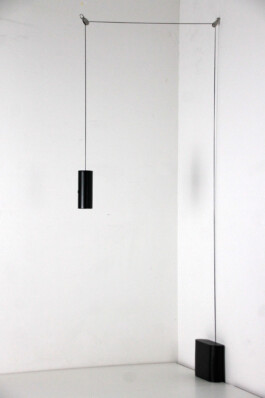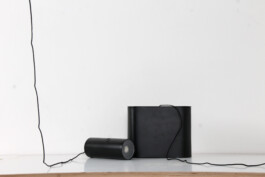


heimild – Lara Pfister, Gregor Rothmeier
Our perception of time has a lot to do with light conditions. Sunset signals to us that the time of day is over, night is falling and we should come to rest. This principle is implemented in an object. The lamp hangs in the living room and provides pleasant light to linger in. Driven by a motor, the lamp slowly lowers over a period of 3 hours and then returns to its starting position. Another movement pattern is that the lamp lowers every quarter of an hour, for example, similar to the auditory signal of a cuckoo clock or a chime. These factors can be set in the programming of the Arduino as required, and in the future it could also be possible to send specific information on time and light to the program using a smartphone, making it even more customizable. The resulting shifting cone of light translates the phenomenon of sunset. Initially, the lamp hangs so high that you can still read or do some finishing work in the light. Over time, the light fills less and less space until the lamp only serves as atmospheric light in a corner of the room, but is no longer suitable for working. The lamp can therefore be seen as a timer or reminder that you switch on in the early evening and are reminded in the late evening that it is now time to end the day and wind down.